-
 Bitcoin
Bitcoin $83,407.2371
-1.63% -
 Ethereum
Ethereum $1,823.1395
-3.06% -
 Tether USDt
Tether USDt $0.9997
-0.02% -
 XRP
XRP $2.0473
-2.23% -
 BNB
BNB $600.1100
-0.49% -
 Solana
Solana $119.7021
-3.88% -
 USDC
USDC $0.9998
-0.01% -
 Dogecoin
Dogecoin $0.1648
-3.39% -
 Cardano
Cardano $0.6519
-2.39% -
 TRON
TRON $0.2368
-0.66% -
 Toncoin
Toncoin $3.8129
-4.99% -
 UNUS SED LEO
UNUS SED LEO $9.3898
-0.23% -
 Chainlink
Chainlink $13.1549
-4.15% -
 Stellar
Stellar $0.2637
-1.07% -
 Sui
Sui $2.4035
1.65% -
 Avalanche
Avalanche $18.5674
-3.45% -
 Shiba Inu
Shiba Inu $0.0...01232
-0.30% -
 Hedera
Hedera $0.1654
0.03% -
 Polkadot
Polkadot $4.0578
-0.51% -
 Litecoin
Litecoin $82.9613
0.22% -
 MANTRA
MANTRA $6.3104
1.76% -
 Bitcoin Cash
Bitcoin Cash $301.4958
-1.14% -
 Bitget Token
Bitget Token $4.5444
-0.98% -
 Dai
Dai $0.9999
-0.01% -
 Ethena USDe
Ethena USDe $1.0000
0.02% -
 Pi
Pi $0.6681
-3.26% -
 Hyperliquid
Hyperliquid $12.3441
-5.68% -
 Monero
Monero $216.6690
-0.88% -
 Uniswap
Uniswap $5.9832
-2.69% -
 Aptos
Aptos $5.2233
-0.17%
Analysis of the operating structure of decentralized autonomous organizations (DAO)
DAOs operate via smart contracts on blockchains, using governance tokens for decision-making and managing funds transparently through a decentralized treasury.
Apr 02, 2025 at 08:35 am
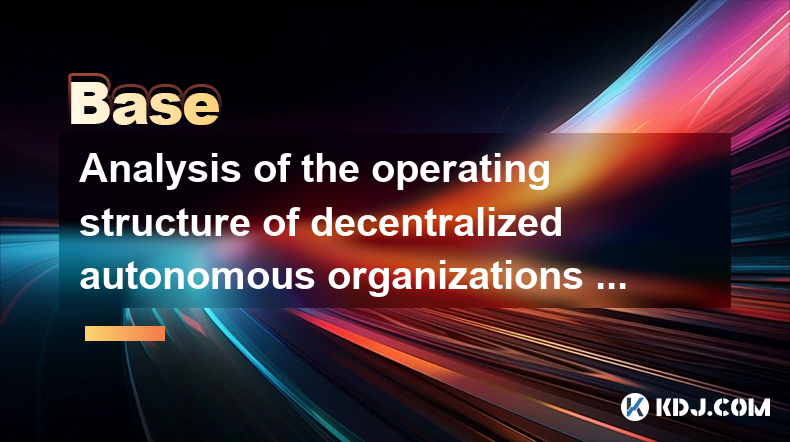
Understanding the Core Components of a DAO
Decentralized Autonomous Organizations (DAOs) represent a novel approach to organizational structure, leveraging blockchain technology to operate without central authority. This decentralized nature raises several questions regarding their operational mechanisms. Understanding the core components is crucial to grasping how DAOs function. These components typically include a smart contract, a governance token, and a community of participants. The smart contract acts as the DAO's immutable rulebook, automatically executing pre-defined actions based on predetermined conditions. The governance token allows members to participate in decision-making processes, with voting power often proportional to token holdings.
The Role of Smart Contracts in DAO Operation
The smart contract is the backbone of any DAO. It's a self-executing contract with the terms of the agreement between buyer and seller being directly written into lines of code. This code resides on a blockchain, ensuring transparency and immutability. The smart contract defines the DAO's rules, including membership criteria, voting mechanisms, treasury management, and fund allocation processes. Any actions within the DAO must adhere to the stipulations outlined in the smart contract. Modifications to the smart contract typically require a governance vote from the DAO's members, highlighting the democratic nature of the organization.
Governance Tokens and Their Influence on Decision-Making
Governance tokens are crucial for DAO decision-making. They represent ownership stakes and voting rights within the organization. Token holders can participate in proposals, vote on changes to the DAO's rules, and influence the direction of the project. The weighting of votes often correlates with the number of tokens held, although different DAOs may employ various voting mechanisms, such as quadratic voting or weighted voting schemes. The distribution of governance tokens at the DAO's inception significantly impacts the initial power dynamics within the organization.
Membership and Participation in a DAO
Participation in a DAO is generally open to anyone holding the organization's governance token. The level of involvement can vary widely, from simply holding tokens and participating in votes to actively contributing to the DAO's projects and development. Some DAOs have specific requirements for membership, such as completing onboarding tasks or demonstrating expertise in a particular area. The community aspect is vital, with members often collaborating on projects, sharing information, and engaging in discussions about the DAO's future direction. Active participation is often encouraged to ensure a healthy and thriving DAO.
Treasury Management and Fund Allocation in DAOs
DAOs typically manage funds through a decentralized treasury. This treasury holds the DAO's assets, which can be cryptocurrencies, NFTs, or other digital assets. The smart contract governs the allocation of these funds, ensuring transparency and preventing unauthorized access. Proposals for fund allocation are typically submitted by members and voted upon by the community. Successful proposals result in the automatic disbursement of funds according to the terms of the approved proposal. This transparent and community-driven approach to treasury management is a defining feature of DAOs.
Dispute Resolution and Conflict Management in DAOs
Disputes can arise within any organization, and DAOs are no exception. The decentralized nature of DAOs presents unique challenges in resolving conflicts. Many DAOs rely on their governance mechanisms to resolve disputes. This often involves submitting proposals outlining the problem and proposed solutions, followed by community voting. Alternative dispute resolution methods, such as arbitration, may be employed in more complex situations. The lack of a central authority necessitates clear and well-defined processes for handling disagreements to maintain the smooth functioning of the DAO.
Scalability and Efficiency Challenges in DAO Operations
As DAOs grow in size and complexity, scalability and efficiency become significant concerns. The processing of large numbers of transactions and votes can strain the blockchain network and increase costs. Furthermore, coordinating the actions of a large and diverse community can be challenging. Solutions being explored include improved smart contract design, layer-2 scaling solutions, and more efficient governance mechanisms. Addressing these challenges is crucial for the long-term success and adoption of DAOs.
Security Considerations in DAO Operations
Security is paramount for DAOs, as they manage significant assets and sensitive information. The immutability of blockchain technology offers some security benefits, but DAOs are still vulnerable to various threats. Smart contract vulnerabilities, such as bugs or exploits, can be exploited by malicious actors. Furthermore, governance attacks, where malicious actors manipulate voting processes, pose a significant risk. Robust security audits, secure coding practices, and careful consideration of governance mechanisms are crucial to mitigating these risks.
Evolution and Future Trends in DAO Structures
The field of DAOs is constantly evolving, with new approaches and innovations emerging regularly. Research and development are focusing on improving scalability, security, and governance mechanisms. The integration of advanced technologies, such as zero-knowledge proofs and decentralized identity solutions, is expected to enhance the efficiency and security of DAOs. Furthermore, the exploration of different governance models and tokenomics is likely to lead to more sophisticated and effective DAO structures.
Common Questions and Answers
Q: What is the difference between a traditional organization and a DAO?
A: Traditional organizations have a centralized structure with a hierarchical management system. DAOs are decentralized, operating based on smart contracts and community governance. Decision-making in DAOs is distributed among token holders, unlike the centralized control in traditional organizations.
Q: How secure are DAOs?
A: DAO security depends heavily on the design and implementation of their smart contracts and governance mechanisms. While blockchain offers inherent security, vulnerabilities in code or governance processes can be exploited. Thorough audits and secure coding practices are crucial.
Q: How do I participate in a DAO?
A: Participation typically involves acquiring the DAO's governance token. The specific methods for acquiring tokens vary depending on the DAO. Once you hold tokens, you can participate in governance votes and other DAO activities. Some DAOs might have additional requirements for active participation.
Q: What are the benefits of using a DAO?
A: DAOs offer transparency, immutability, and community-driven decision-making. They can facilitate collaboration across geographical boundaries and foster a more democratic organizational structure. However, they also present challenges in terms of scalability, security, and dispute resolution.
Q: What are the limitations of DAOs?
A: DAOs face limitations in scalability, particularly with large numbers of participants. Security vulnerabilities in smart contracts remain a concern. The lack of a central authority can make decision-making slower and more complex, especially in resolving conflicts. Legal and regulatory uncertainties also pose challenges.
Q: What is the future of DAOs?
A: The future of DAOs is uncertain but holds significant potential. Ongoing developments in blockchain technology, smart contract design, and governance mechanisms are likely to address current limitations. Wider adoption and integration with other technologies could lead to more sophisticated and impactful DAO structures.
Disclaimer:info@kdj.com
The information provided is not trading advice. kdj.com does not assume any responsibility for any investments made based on the information provided in this article. Cryptocurrencies are highly volatile and it is highly recommended that you invest with caution after thorough research!
If you believe that the content used on this website infringes your copyright, please contact us immediately (info@kdj.com) and we will delete it promptly.
- Grayscale Launches Two New Bitcoin-Themed Exchange-Traded Funds (ETFs) Targeting Income Generation
- 2025-04-03 10:15:21
- China Discovers Massive 1,000-Ton Gold Deposit in Its Northeast
- 2025-04-03 10:15:21
- Fidelity Investments introduces an individual retirement account (IRA) that permits private investors to invest in cryptocurrencies
- 2025-04-03 10:10:13
- President Donald Trump Announces Sweeping Reciprocal Tariffs on Global Imports and Declares April 2, 2025, “Liberation Day”
- 2025-04-03 10:10:13
- The price of Solana (SOL) is desperately trying to remain above important support levels amid increasing pressure
- 2025-04-03 10:05:13
- Ethereum (ETH) is again in the limelight, since technical indicators indicate bullish and network activities to a possible turnaround.
- 2025-04-03 10:05:13
Related knowledge
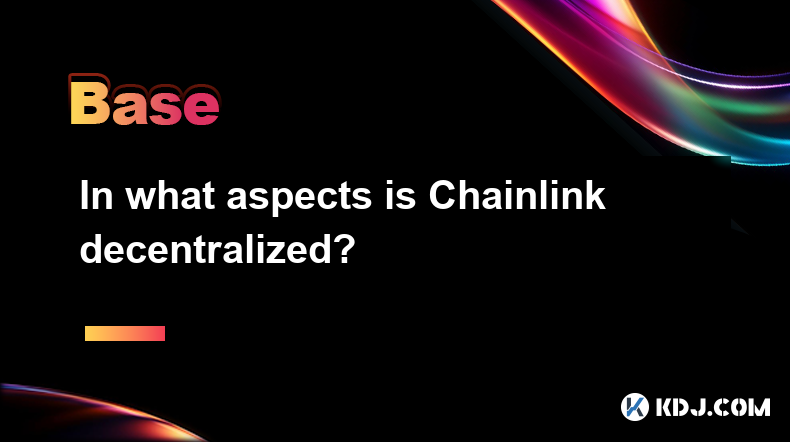
In what aspects is Chainlink decentralized?
Apr 02,2025 at 05:49pm
Chainlink is a decentralized oracle network that plays a crucial role in connecting smart contracts on blockchain networks with real-world data. Its decentralization is reflected in multiple aspects, ensuring the network's security, reliability, and integrity. This article delves into the various ways Chainlink achieves decentralization, including its n...
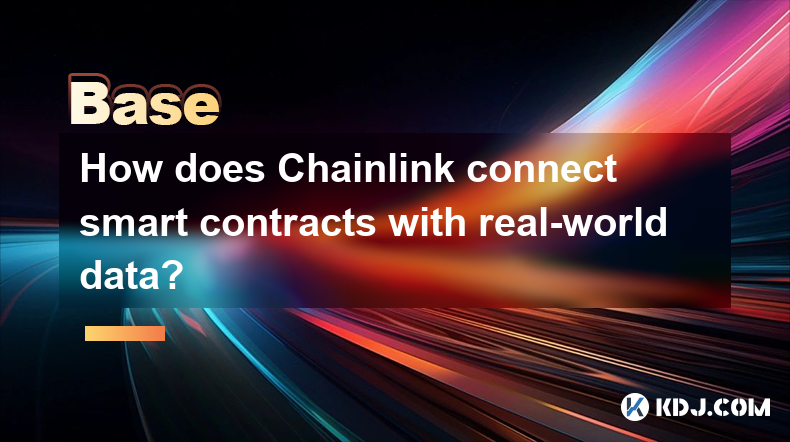
How does Chainlink connect smart contracts with real-world data?
Apr 02,2025 at 03:56pm
Chainlink is a decentralized oracle network that plays a crucial role in connecting smart contracts on blockchain platforms with real-world data. Smart contracts are self-executing contracts with the terms of the agreement directly written into code, but they can only interact with on-chain data. To access real-world data, such as stock prices, weather ...
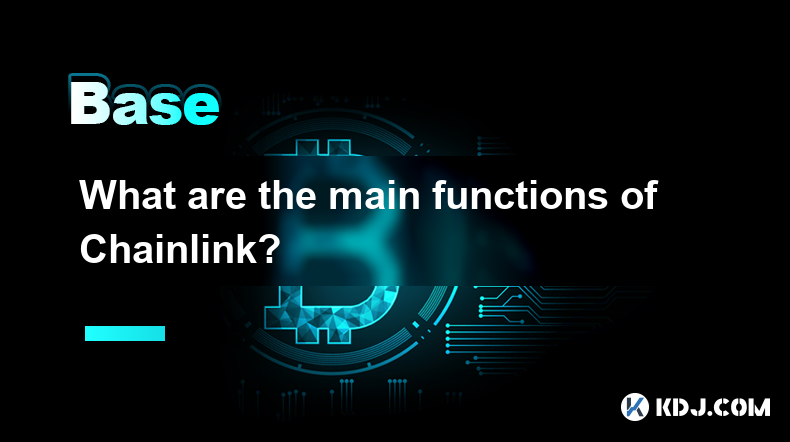
What are the main functions of Chainlink?
Apr 02,2025 at 11:49pm
Chainlink is a decentralized oracle network that plays a crucial role in connecting smart contracts with real-world data and external APIs. The primary function of Chainlink is to facilitate the seamless integration of off-chain data into on-chain smart contracts, enabling them to execute based on real-world events and information. This integration is v...

How does Chainlink work?
Apr 03,2025 at 01:50am
Chainlink is a decentralized oracle network that connects smart contracts with real-world data and external APIs. It plays a crucial role in the blockchain ecosystem by enabling smart contracts to interact with data outside their native blockchain environment. This connectivity is essential for smart contracts to execute based on real-world events and d...
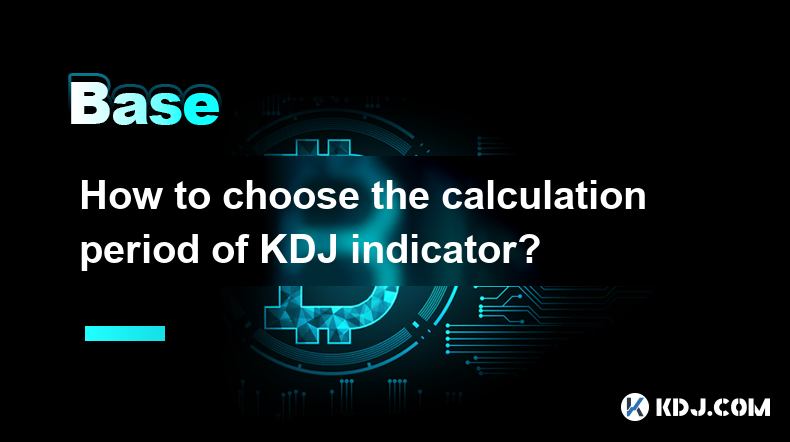
How to choose the calculation period of KDJ indicator?
Apr 02,2025 at 01:00pm
The KDJ indicator, also known as the Stochastic Oscillator, is a popular technical analysis tool used by cryptocurrency traders to identify potential buy and sell signals. The calculation period of the KDJ indicator is crucial in determining its effectiveness in predicting market trends. In this article, we will explore the factors to consider when choo...
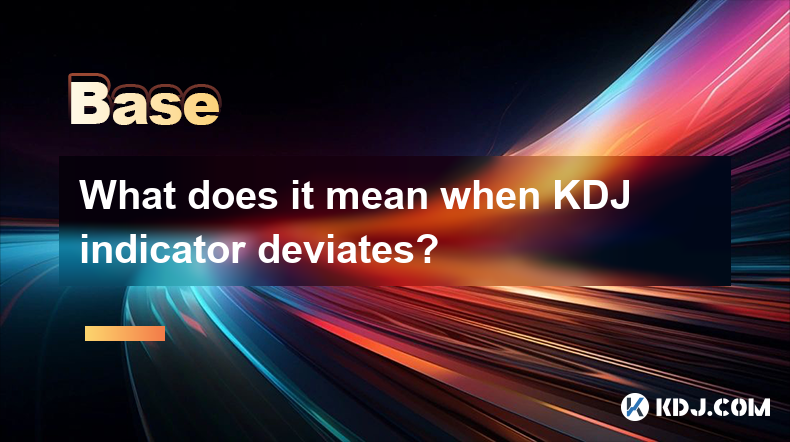
What does it mean when KDJ indicator deviates?
Apr 01,2025 at 03:08pm
The KDJ indicator, also known as the Stochastic Oscillator, is a popular technical analysis tool used in the cryptocurrency market to predict price movements. When the KDJ indicator deviates, it means that the current price of a cryptocurrency is moving away from its typical range, as indicated by the KDJ lines. This deviation can signal potential trend...

In what aspects is Chainlink decentralized?
Apr 02,2025 at 05:49pm
Chainlink is a decentralized oracle network that plays a crucial role in connecting smart contracts on blockchain networks with real-world data. Its decentralization is reflected in multiple aspects, ensuring the network's security, reliability, and integrity. This article delves into the various ways Chainlink achieves decentralization, including its n...

How does Chainlink connect smart contracts with real-world data?
Apr 02,2025 at 03:56pm
Chainlink is a decentralized oracle network that plays a crucial role in connecting smart contracts on blockchain platforms with real-world data. Smart contracts are self-executing contracts with the terms of the agreement directly written into code, but they can only interact with on-chain data. To access real-world data, such as stock prices, weather ...

What are the main functions of Chainlink?
Apr 02,2025 at 11:49pm
Chainlink is a decentralized oracle network that plays a crucial role in connecting smart contracts with real-world data and external APIs. The primary function of Chainlink is to facilitate the seamless integration of off-chain data into on-chain smart contracts, enabling them to execute based on real-world events and information. This integration is v...

How does Chainlink work?
Apr 03,2025 at 01:50am
Chainlink is a decentralized oracle network that connects smart contracts with real-world data and external APIs. It plays a crucial role in the blockchain ecosystem by enabling smart contracts to interact with data outside their native blockchain environment. This connectivity is essential for smart contracts to execute based on real-world events and d...

How to choose the calculation period of KDJ indicator?
Apr 02,2025 at 01:00pm
The KDJ indicator, also known as the Stochastic Oscillator, is a popular technical analysis tool used by cryptocurrency traders to identify potential buy and sell signals. The calculation period of the KDJ indicator is crucial in determining its effectiveness in predicting market trends. In this article, we will explore the factors to consider when choo...

What does it mean when KDJ indicator deviates?
Apr 01,2025 at 03:08pm
The KDJ indicator, also known as the Stochastic Oscillator, is a popular technical analysis tool used in the cryptocurrency market to predict price movements. When the KDJ indicator deviates, it means that the current price of a cryptocurrency is moving away from its typical range, as indicated by the KDJ lines. This deviation can signal potential trend...
See all articles
























































































